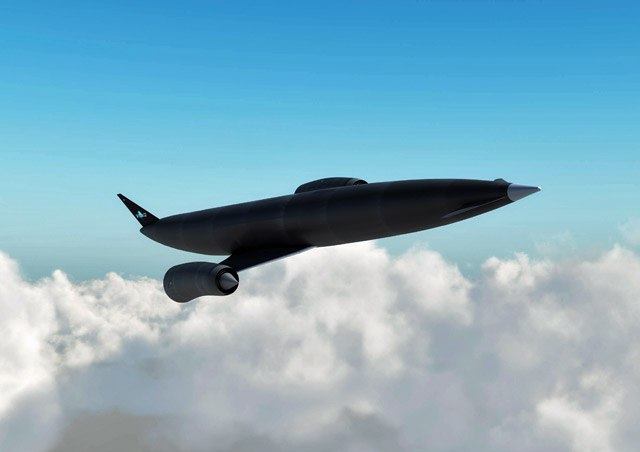British newspaper readers last week could be excused for believing that humankind is poised on the cusp of a new Concorde era – indeed, an era of Concorde on steroids. As the Daily Mail put it with typically breathless excitement: “Could we soon fly London to Sydney in FOUR HOURS? BAE invests in 4,000mph hybrid rocket jet engine firm”.
And, the Mail went on: “Flights from London to New York could take less than two hours”.
Even the more staid Independent, not known for getting breathless, went with: “UK Government invests £60m in Skylon plane that can fly from London to Sydney in 4 hours”.
Reality, needless to say, is somewhat more nuanced. But the crux of the story – that the engine that could make such hypersonic travel possible should be on track for ground testing before the end of the decade – is something that the UK aerospace industry can genuinely get excited about. Actually breathless, even.
What has happened is that UK aerospace champion BAE Systems, with all its financial, technical and organisational resources, and Oxford-based Reaction Engines (RE), with a technical concept that independent experts have decided is a genuine prospect for achieving the long-held dream of pushing a reusable spaceplane from runway to orbit and back in airline style, are joining forces.
The deal, pending approval by RE’s shareholders, would see BAE invest £20 million ($30.7 million) in the Synergetic Air-Breathing Rocket Engine (SABRE) in exchange for a one-fifth share in the company. Together, the two companies believe they can have SABRE in full-scale ground-rig tests before 2020 and get it into a flight vehicle soon after that.
RE believes that Mach 5 atmospheric cruise is possible, but the real value of hypersonic speeds is to escape from Earth’s gravity and reach orbit. Thus the breakthrough in late 2012, when the European Space Agency formally declared SABRE to be viable. In 2013, the London government, via the UK Space Agency, promised £60 million support for the programme, at which point the 2020 timetable was set out.

Skylon: wing-mounted SABRE engines are designed for easy swap-out, airline-style
Reaction Engines
In early 2014, underscoring how seriously SABRE is taken, RE signed a co-operative R&D agreement with the US Air Force Research Laboratory.
The key to SABRE is a lightweight heat exchanger, essentially a radiator made of many hundreds of kilometres of 1mm tubing capable of liquidising oxygen from intake air by boiling off tanked liquid hydrogen and, critically, not frosting up. A SABRE-powered spaceplane would get its thrust for take-off and early ascent by mixing tanked hydrogen and oxygen from the air until reaching about M5.5 at 26km (16 miles) altitude, when tanked oxygen takes over and SABRE becomes a normal, self-contained rocket engine.
By reducing dramatically the mass of liquid oxygen that must be carried from the ground, RE believes it can achieve the holy grail of single-stage-to-orbit flight, slashing launch costs and turnaround times with essentially complete reusability.
The company’s concept for a spaceplane, called Skylon, is 84m (275ft) long and designed to deliver up to 15t to low-Earth orbit.
As RE managing director Mark Thomas tells Flightglobal, the demonstration engine that is now going into design and development will not be big enough to power Skylon, so those 4h flights to Australia would have to wait. But the programme has real momentum. Thomas – a former Rolls-Royce chief engineer who joined RE in May of this year, with a brief to assess the viability of the project – says that, based on the work done with ESA and the USAF, he is convinced that SABRE is realistic and achievable, and that rig tests in 2019 are also realistic “if we shake the company”.
For its part, BAE is bringing expertise that is crucial to this next stage of the programme. As engineering director Chris Allam puts it, BAE engineers know heat exchangers, they know how to run a test programme and, critically, they know how to manage one. The company is also good at making industry partnerships: “We come in a very practical sense”.
As for SABRE’s chances of becoming a milestone British engineering triumph, Allam adds that BAE Systems – or its forerunners – has been involved in virtually every great advance in aviation history, and he hopes that this “genuinely unique” propulsion concept will be the next example. In any case, he notes, SABRE is a route into space access, so BAE’s investment in RE is of strategic value.
Perhaps remarkably for a British high-technology venture, money is not a great issue. SABRE was invented some 30 years ago by RE founder and chief engineer Alan Bond, for the UK’s ultimately abandoned HOTOL spaceplane concept. As Thomas notes, the company raised about £32 million in 20 years. Now, with BAE’s £20 million and another £10 million from recent fundraising, RE is half way to the matching funds needed to unlock the UKSA’s £60 million. UKSA chief executive David Parker reckons the presence of BAE’s “industrial muscle” will have a galvanising effect on partners and financing.
Ultimately, both Thomas and Allam reckon that an operational spaceplane is beyond the scope of purely UK funding but, if successful, RE would have sealed the UK’s place in space. In SABRE, says Thomas, we are preparing “a Whittle moment”.
Source: FlightGlobal.com













